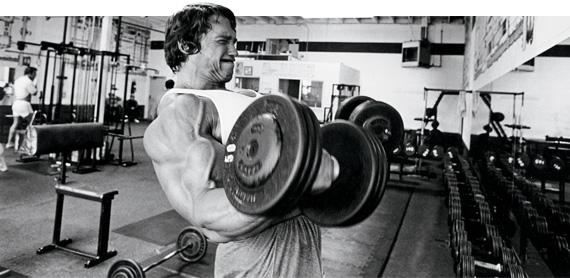Whenever we see a novice using momentum during his lift, we know that he/she is not aware of the correct form of that exercise. For e.g. during a barbell curl, swinging the bar and using the momentum of the body to curl the barbell up, instead of strictly using the bicep muscles.
But, what about the advance lifters, or professional athletes, as many of them can be seen using momentum, during certain lifts? We can’t say, that they are unaware of the correct movement.
The actual difference is using momentum out of ignorance, & using it deliberately in a calculated manner.
Both are forms of ‘Cheat Reps’. The difference is intentional & unintentional, the latter being more dangerous of the two. However, both scenario involves the use of ‘‘external momentum’’, i.e. momentum supplied by the action of muscles not inherently involved in the exercise performed.

For e.g. doing using leg drive to push a heavy barbell during shoulder press vs using leg drive throughout the exercise, even with submaximal weights.
Moving your torso up & down, to pull out the last few reps during heavy T-bar row/bent over barbell row, vs moving the torso up & down from the very first rep.
Using momentum to raise a dumbbell during lateral raises, in the last few reps, vs using momentum from the very first rep.
Therefore, cheat reps, are deliberately performed, mostly as a finisher, to push beyond failure. Here there are two options, either to take support from your training partner in completing the rep, while maintaining a good form, or simply use a bit of momentum to complete the rep.
However, this type of cheating or use of momentum has to be slight, and done in a conscious way. Overdoing things, can lead to injury. Better to do a partial rep, or perform rest pause set, or take help of a partner, than using too much momentum to complete the rep.
If the goal of the movement is hypertrophy and cheating has caused a decrease in the intensity and duration of tension felt in the target muscles you’re cheating too much.
Momentum is an important factor in resistance training itself too, and can greatly affect the amount of load that can be lifted successfully and the effort required to do so. One we saw, how intentional momentum is used to push beyond failure. Then there are certain movements, which simply can’t be completed without using sufficient momentum. Both in the snatch and in the clean and jerk, it is essential to supply sufficient momentum to the barbell during the pulling phase to ensure that it reaches the height at which it can be caught by the lifter.
Acc. to a studythe greater the momentum of the load lifted, such as that of a weighted bar or a dumbbell, the longer the load will sustain motion against gravity even in the absence of any additional force exerted against it by the trainee. As a corollary, the momentum may be used to overcome biomechanically weak points in a lift. Indeed, this phenomenon is often exploited by strength and power athletes such as powerlifters and weightlifters.
Also, if the momentum is supplied to the load at a point in the lift at which the target muscles are in a biomechanically inferior position to exert effective force, this weakness may be overcome allowing greater force to be applied in the range of motion which is better suited for overloading the target muscles.
While it can be said that the development of the momentum of the load is desirable in performance sports in which the goal is to maximize the amount of weight successfully lifted, the role of momentum in hypertrophy-oriented training is far less clear.
The above studyinvestigated the use of ‘‘external momentum’’ for hypertrophy-specific training, taking shoulder lateral raises as an example. The results suggest that the use of moderate momentum at the beginning of each repetition in a set can facilitate the use of heavier loads and a better overload of muscles in biomechanically advantageous positions. Excessive use of momentum resulted in the lowering of the loading imposed on the target muscles and decreased total hypertrophy stimulus, discouraging its use.
Also, using momentum in certain movements is a strict no, for e.g. heavy squats, deadlifts, good mornings etc. Drop the weight, in case you aren’t able to complete the rep. Using momentum in such cases, is a sure shot invitation to injury.




